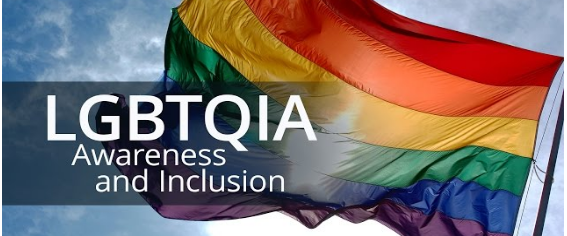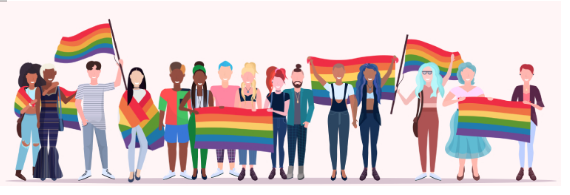
The Role of Diversity and Inclusion Programs in Promoting LGBTQIA+ Inclusion
Introduction
In a world that continues to evolve, diversity and inclusion have emerged as pivotal elements of societal progress. One of the most significant strides in this journey towards a more inclusive society has been the recognition and acceptance of LGBTQIA+ (Lesbian, Gay, Bisexual, Transgender, Queer/Questioning, Intersex, Asexual and many more) individuals. However, the road to complete LGBTQIA+ Inclusion in the Workplace remains filled with challenges, prejudices, and discrimination. This is where diversity and inclusion programs play a crucial role. In this article, we will explore how these programs are instrumental in promoting LGBTQIA+ inclusion.
Understanding Diversity and Inclusion Programs
Diversity and inclusion programs are comprehensive strategies implemented by organizations, educational institutions, and communities to foster an environment where individuals from all backgrounds, regardless of race, gender, sexual orientation, or other factors, feel valued and included. Such programs aim to break down barriers, challenge biases, and create spaces where diversity is not just acknowledged but celebrated.
LGBTQIA+ Inclusion: A Necessity
LGBTQIA+ inclusion is not just a matter of political correctness; it is a fundamental human right. Discrimination against LGBTQIA+ individuals can have severe consequences on their mental and emotional well-being. According to a report by the National Alliance on Mental Illness (NAMI), LGBTQIA+ individuals are at a higher risk of experiencing mental health issues due to societal stigma and discrimination.
Diversity and inclusion programs play a pivotal role in dismantling these barriers and creating a more inclusive environment for LGBTQIA+ individuals. Here are some ways they do so:
- Education and Awareness: One of the primary functions of diversity and inclusion programs is to educate individuals about LGBTQIA+ issues. These programs provide information about sexual orientations, gender identities, and the challenges faced by LGBTQIA+ individuals. By increasing awareness, stereotypes, and biases can be challenged and dispelled.
- Policy Development and Implementation: Inclusive policies within organizations and institutions are vital in protecting LGBTQIA+ rights. Diversity and inclusion programs often work hand-in-hand with HR departments and management to develop and implement policies that prevent discrimination based on sexual orientation or gender identity. This includes policies related to hiring, promotion, and workplace behavior.
- Training:Training programs are a cornerstone of diversity and inclusion efforts. Organizations conduct sensitivity training to help employees and members of the community understand the experiences and perspectives of LGBTQIA+ individuals. These programs can foster empathy and reduce prejudice.
- Creating Safe Spaces:Diversity and inclusion programs work towards creating safe spaces where LGBTQIA+ individuals can be themselves without fear of discrimination or harassment. This includes establishing support groups, confidential helplines, and designated spaces where LGBTQIA+ individuals can seek assistance or simply find a sense of belonging.
- Community Engagement:LGBTQIA+ inclusion extends beyond the workplace or educational institution. Community-based diversity and inclusion programs engage with local LGBTQIA+ organizations, host events, and collaborate with advocacy groups to promote LGBTQIA+ rights and visibility.

- Representation:Representation matters. Diversity and inclusion programs often advocate for increased representation of LGBTQIA+ individuals in leadership roles, media, and public life. Seeing LGBTQIA+ individuals in positions of authority and influence helps normalize their presence and challenges stereotypes.
- Allyship:These programs promote allyship, encouraging individuals who do not identify as LGBTQIA+ to become allies. Allies play a crucial role in supporting and advocating for the LGBTQIA+ community, helping to create a more inclusive environment.
- Data Collection and Monitoring: To track progress and identify areas for improvement, diversity and inclusion programs collect data related to LGBTQIA+ experiences within their organizations or communities.
Challenges and the Way Forward
Despite the significant strides made in recent years, there are still challenges in promoting LGBTQIA+ inclusion through diversity and inclusion programs. These challenges include:
- Resistance and Pushback:Some individuals and groups resist LGBTQIA+ inclusion efforts due to deep-seated biases or misconceptions. Overcoming this resistance requires patience, persistence, and effective communication.
- Lack of Legal Protections: In many regions, LGBTQIA+ individuals lack comprehensive legal protections against discrimination. Diversity and inclusion programs can help fill this gap by advocating for change at the policy level.
- Intersectionality:LGBTQIA+ individuals may face discrimination not only based on their sexual orientation or gender identity but also due to other factors such as race, religion, or disability. Intersectional approaches are needed to address these complex issues.
- Mental Health Support:While diversity and inclusion programs can create safe spaces, more resources are often needed for mental health support tailored to LGBTQIA+ individuals who may have unique challenges.
Conclusion
Diversity and inclusion programs by the American Diversity Initiative play a pivotal role in promoting LGBTQIA+ inclusion by fostering awareness, changing policies, creating safe spaces, and advocating for equal rights. However, the journey toward full inclusion is ongoing and requires continuous effort, education, and collaboration. As societies become more diverse and inclusive, we move closer to a world where all individuals, regardless of their sexual orientation or gender identity, can live authentically and without fear of discrimination or prejudice.



